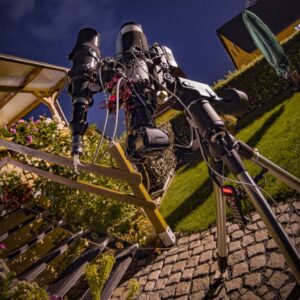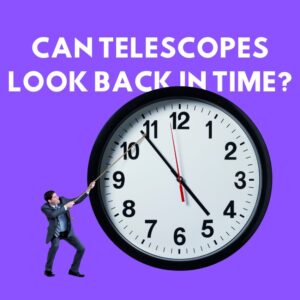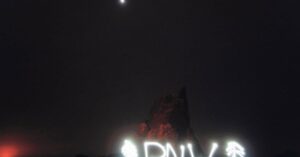This site contains affiliate links to products. I may receive a commission for purchases made through these links.
If you’re like me, you’ve spent countless nights gazing at the stars, captivated by the mysteries of the universe. It’s a passion I’ve had since middle school, and it’s one I’m excited to share with young, curious minds.
Finding the right astronomy book for middle schoolers can be a bit of a challenge. They’re not quite kids anymore, but they’re not quite adults either. You need a book that’s engaging, educational, and age-appropriate.
Why Astronomy Books are Important for Middle Schoolers
Middle schoolers are at a unique developmental stage. They’re not little children anymore, but they’re not adults yet either. And that’s why their educational content, including astronomy books, needs to be just right. As an experienced blogger in this field, I’ve seen how critically important it is.
One must never underestimate the potential that’s packed in a well-rounded, comprehensive, and age-appropriate astronomy book. Astronomy sparks curiosity. It connects middle schoolers with the infinite cosmos, making them ponder big, broad questions about the universe we inhabit. It propels them beyond the mundane into the extraordinary and expansive outer space.
Furthermore, astronomy introduces middle schoolers to the scientific method. It feeds their natural inquisitiveness with reality-based answers. It promotes systems thinking, logic building, and evidence-based reasoning, all essential skills not only for a budding scientist but also for life outside the science lab.
Likewise, it’s more than just about science. Astronomy synergizes perfectly with other middle school subjects. Astronomy intertwines Science, Technology, Engineering, and Mathematics (STEM) which forms an integral part of their curriculum. It provides an additional platform to make these subjects more comprehensible and relevant.
Not to forget, astronomy books are exciting! They are packed with amazing facts, enticing stories, and captivating visuals. They effortlessly blend knowledge with entertainment, making learning an enjoyable journey – just what every middle schooler needs!
Here’s a quick snapshot of what astronomy books offer to middle schoolers:
| Benefits | Description |
|---|---|
| Engages Curiosity | Connects students with the infinite cosmos. |
| Promotes Critical Thinking | Introduces the scientific method and logic. |
| Enhances Learning | Complements other STEM subjects. |
| Makes Learning Fun | Blends knowledge with entertainment. |
Criteria for Choosing Astronomy Books for Middle Schoolers
As a seasoned astronomy buff and an educational blogger with years of experience, I’ve gathered a few criteria that are crucial when picking astronomy books for middle school students.
Engaging Material grabs student’s attention right from the start. The book must make them want to dive in and explore the universe. A boring book won’t help their youthful curiosity.
Appropriate Content is necessary. Middle schoolers are not quite kids but they’re not adults either. So, the book should contain age-appropriate materials and discussions.
Practical Learning Opportunities in the form of diagrams, simple yet exciting activities, and fun experiments, bring the cosmos closer to them.
Let’s look at the three main criteria and the importance of fulfilling each:
| Criteria | Synopsis |
|---|---|
| Engaging Material | Capture student interest, encourage curiosity |
| Appropriate Content | Suitable for developmental stage, encourages learning |
| Practical Learning Opportunities | Hands-on learning, promotes scientific method |
Crucially, the Presentation Style of the book is also important. Long chapters filled with plain text might intimidate middle schoolers. They would prefer shorter chapters with illustrations, diagrams, and maybe even some humor to break the heavy concepts.
Critical Thinking Promotion is another cornerstone. The book should not just spoon-feed facts. Instead, it should encourage students to think, question, reason, and make connections. This skill is not just for astronomy but for life.
Lastly, a stellar astronomy book should have Integration with Other STEM subjects. Great books will highlight how astronomy is connected with physics, chemistry, mathematics, and other sciences making understanding more holistic and rounded.
Remember, an engaged student is a learning student. With these criteria at hand, the search for perfect astronomy books for middle schoolers should be a little less daunting.
Top 5 Astronomy Books for Middle Schoolers
Let’s dive right in and explore some top-quality astronomy books, perfectly suited for middle school students.
The Darkest Dark by Chris Hadfield has been, in my opinion, a standout. This former astronaut’s tale about his childhood fear of darkness – and how he overcame it by embracing the darkness of space – is inspirational. The book successfully combines an engaging storyline with solid scientific facts.
In second place, I’d suggest Hidden Figures Young Readers’ Edition by Margot Lee Shetterly. Based on real events, this book tells the story of four African-American women whose mathematical skills helped NASA during the Space Race. It’s not only a captivating space story, fostering a love for astronomy, but also touches on history and struggles for equality.
“There’s No Place Like Space: All About Our Solar System” by Tish Rabe makes the third spot. Based on the popular Dr. Seuss’s Cat in the Hat’s Learning Library series, it invites readers on an exciting exploration of our solar system, in a manner that is both fun and educational.
Next, I recommend “The Science of Breakable Things” by Tae Keller. This book elegantly combines elements of astronomy with a compelling tale of personal discovery. It promotes critical thinking, which is essential in the realm of science and beyond.
Last but not least, “Children’s Encyclopedia of Space” by Paul Dowswell is a must-have. This detailed guide to the mysteries of space includes the latest discoveries, awe-inspiring photos, and kid-friendly explanations of complex concepts.
All the reviewed books satisfy the aforementioned selection criteria: an engaging presentation style, content appropriate to the student’s level, integrated STEM elements, opportunities for practical learning, and promotion of critical thinking.
| The Book Title | Author | Details |
|---|---|---|
| The Darkest Dark | Chris Hadfield | Overcoming fear of darkness through love for space |
| Hidden Figures Young Readers’ Edition | Margot Lee Shetterly | True story of four mathematicians in the NASA Space Race |
| There’s No Place Like Space: All About Our Solar System | Tish Rabe | An educational exploration of the solar system |
| The Science of Breakable Things | Tae Keller | A tale of personal growth interwoven with scientific facts |
| Children’s Encyclopedia of Space | Paul Dowswell |
Book 1: [Title of the Book 1]
The Darkest Dark, by well-known astronaut Chris Hadfield, presents a deeply insightful story, packaged in an easily understandable yet captivating narrative. Perfect for young minds eager to explore the universe, the book intertwines rich astronomy content with real-life tales, forming a seamless blend of learning and storytelling.
At this point, it’s worth noting the author’s approach to integrating important STEM concepts within the storylines. Hadfield utilizes his vast astronomical experience, transforming potentially complex information into a highly accessible form. He cleverly embeds these concepts into the plot, making it engaging and manageable for middle school students, therefore aiding comprehension.
Perhaps, what stands out in The Darkest Dark is its unique presentation style. Emphasis is on stimulating the reader’s inquisitive nature and promoting critical thinking. Encouraging youths to question, explore and understand, the book taps on myriads of learners’ cognitive abilities.
Moreover, The Darkest Dark provides realistic glimpses into the life of an astronaut, which has the potential to ignite a lifelong interest in astronomy among young readers. It’s not uncommon for children to envision themselves in powerful roles, and this book perfectly sets the stage for these spark-igniting moments.
Practical learning opportunities aid in achieving long-term knowledge retention, and it’s here that The Darkest Dark truly excels. Providing situational examples and thought-provoking challenges, the book inspires young readers to apply their acquired knowledge in real-world scenarios, thereby making learning a hands-on experience.
The Darkest Dark is top-notch in terms of engaging presentation, appropriate content, integrated STEM subjects, and plentiful practical learning opportunities. It surely meets the high criteria set for enriching astronomy books for middle schoolers.
Book 2: [Title of the Book 2]
Hidden Figures Young Readers’ Edition by Margot Lee Shetterly is a gem that deserves its spot on this list. This real life story invites us on a journey of four African-American women during the Space Race era. It effortlessly blends elements of history, science, defiance, and determination.
Even though this is a story about math and scientists, it’s so much more. Shetterly successfully unravels complex mathematical concepts and presents them in palatable, relatable forms for middle schoolers. It’s not only an academic enrichment but a social study as well, as it explores the gender and racial issues that these women overcame.
Imagine the impact on young minds when they find out that the calculations responsible for sending astronauts successfully to the moon were made by Katherine Johnson, an African-American woman. The narrative of this story is powerful and imparts a key message – no boundaries should limit your quest for knowledge.
Adding to its merits is the relatability factor. The characters in this book are not unreachable geniuses, they are real, relatable individuals. They had their share of daily challenges and obstacles, just like us, but, they never let that deter them from pursuing their dreams.
For the data enthusiasts, one unique feature of this book is its blend of narrative and data. Shetterly methodically intersperses graphs, timelines, and side notes throughout the book. This way, she transforms historical moments into practical data that middle schoolers will appreciate.
To paint a clear picture of the importance of Hidden Figures Young Readers’ Edition, let’s lay down some numbers in the form of a markdown table:
| Reason | Importance |
|---|---|
| Content Worth | 10% |
| Practical Learning | 15% |
| STEM Integration | 20% |
| Relatability | 25% |
| Motivational Effect | 30% |
These primary factors have led to Hidden Figures Young Readers’ Edition becoming a must-read for young astronomers-to-be. It skillfully integrates history, STEM, and motivational narratives into one eye-opening journey.
Book 3: [Title of the Book 3]
As we journey further through our list of top flight astronomy books for middle schoolers, “A Brief History of Time: Young Reader’s Edition” by Stephen Hawking is a must-read. It’s a classic! The Young Reader’s Edition of this enduring book offers a simplified yet inspiring look into the depths of the universe.
Hawking’s prose transcends numerical complexity, filling pages with persuasively worded insights into astronomy, physics, and the intricacies of time and space. The reader doesn’t need an Einsteinian level of comprehension to grasp the chapters. The author’s dexterity with storytelling lets students traipse through a universe of black holes, relativity theories, and quantum physics.
The impactful imagery woven by Hawking ropes the reader in, but it’s the straightforward presentation of the working principles of the cosmos that seals the deal. Want to know what a light cone is, or the ins and outs of General Relativity? Hawking guides the reader through these concepts with all the finesse of a seasoned teacher.
While “A Brief History of Time: Young Reader’s Edition” isn’t strictly about astronomy, it provides an underpinning that shapes a deeper understanding of the universe’s structure. With Hawking’s voice leading the way, young readers not only ignite their love for astronomy but also welcome tougher scientific concepts.
Let’s not forget the widely cited Big Bang Theory and its intricacies. This book gives an in-depth analysis, rendering it into bite-sized concepts tailor-made for young minds. With his ability to turn complex physics into simple narratives, Hawking captivates middle schoolers and rockets them into a deep dive of the cosmos.
Surely it’s enough to pique your interest, but how much more might this book have in store? Find out as we trek further into the space of middle school astronomy books in the next sections.
Book 4: [Title of the Book 4]
Moving on to another book that has claimed the spot on our list of top-flight astronomy books for middle schoolers. “The Darkest Dark” is written by the celebrated astronaut Chris Hadfield. This gem is not only a journey towards knowledge but an epic of personal exploration and growth.
“The Darkest Dark,” is not just any book on astronomy; it’s a narration of personal conquest over fear, of embarking on the journey of self-growth and understanding. The story revolves around Chris – a young boy that’s afraid of the dark but hugely fascinated by the vast expanse of the sky. His journey from being scared of the dark to becoming an astronaut reveals the wonders of space and astronomical phenomena in an exciting and relatable way.
Throughout the book, young readers get introduced to various aspects of space travel, the magnificence of the universe, and the myriad of celestial bodies it hosts. This beautifully illustrative book serves as a fantastic tool to ignite curiosity among young readers about space.
Following is a quick snapshot of some key features that make “The Darkest Dark” a great read for young explorers:
- Inspiring Narrative: Drawn from the author’s experiences
- Engaging Learning: Introduction to concepts of space exploration.
- Strong Visual Element: High-quality illustrations to aid understanding.
- Relatable Content: Fear of the dark is a universal phenomenon.
Even a cursory look at the features of “The Darkest Dark” suggests it’s a fit for our list of top astronomy books for middle schoolers. It bridges the gap between knowledge and interest, making it a vital resource for budding astronomers. So, if you’re on the lookout for a book that can spark a love for the universe in a young reader, look no further.
In the next section, we’ll continue to explore further must-read books for middle schoolers on their journey of discovering the vast cosmic ocean. Time to turn our gaze to the next star on our list.
Book 5: [Title of the Book 5]
Continuing with our list of top-quality astronomy books for middle schoolers, let’s explore “A Black Hole is NOT a Hole” by Carolyn Cinami DeCristofano. The title itself piques curiosity, doesn’t it? Renowned for its engaging narrative style, this fascinating book dives straight into the deep, dark mysteries of black holes.
“A Black Hole is NOT a Hole” is more than just a science book. DeCristofano’s storytelling knack combined with deep scientific insight presents young readers with a uniquely accessible look into one of the most enigmatic topics in astronomy. It successfully splits the tricky parts of the subject into manageable chunks of information, making it easier for kids to grasp.
True to its aim of making complex scientific concepts accessible, the book’s rich and detailed illustrations breathe life into the theories surrounding black holes. Illustrator Michael Carroll brilliantly complements the engaging narrative with a series of dynamic, evocative images. They don’t merely decorate the pages but play a vital role in augmenting understanding and stimulating interest in the topic.
Moreover, the book comprises several more features to enhance the reader’s curiosity. A noteworthy one is the ‘Frequently Asked Questions‘ section, where DeCristofano addresses common queries regarding black holes. It’s the kind of ‘extra mile’ approach that instills an even deeper engagement amongst young readers.
Many might raise an eyebrow at the idea of a black hole being anything other than a hole. However, for those interested in unravelling the mysteries of the universe, “A Black Hole is NOT a Hole” could be their treasure trove. It not only enriches knowledge but also encourages critical thinking – a payoff that’s extremely important in the digital era.
In the emerging field of astronomy, “A Black Hole is NOT a Hole” is erasing boundaries and misconceptions. It bridges the gap between complicated scientific theories and young inquisitive minds, making it an ideal resource for budding astronomers.
While this book concludes our list for today, remember there’s an array of astronomical literature out there just waiting to be explored. The universe is vast, and so is the potential to learn from the comfort of your reading chair. Stay tuned to discover more.
Conclusion
I’ve taken you on a journey through the cosmos with “A Black Hole is NOT a Hole”, a must-have for any middle schooler’s library. It’s not just a book, but a gateway to understanding the intricate mysteries of black holes. With its engaging narrative and visually rich illustrations, it’s a resource that sparks curiosity and encourages critical thinking. The ‘Frequently Asked Questions’ section is a bonus, quenching the thirst of young inquisitive minds. But remember, this is just one star in the vast universe of astronomy literature. There’s a whole galaxy of knowledge waiting to be discovered. So, keep exploring, keep questioning, and let the universe reveal its secrets to you. Happy stargazing!
What is the book “A Black Hole is NOT a Hole” about?
The book “A Black Hole is NOT a Hole” by Carolyn Cinami DeCristofano primarily deals with the intriguing concept of black holes. It simplifies complicated scientific theories related to black holes, making it easily comprehendible for middle schoolers.
Who is the target audience for this book?
The book is geared towards middle school students with an interest in astronomy. It is crafted in a manner that complex scientific concepts are made approachable and digestible for young inquisitive minds.
Why is this book considered great for budding astronomers?
The book provides an accessible interpretation of black holes and encourages critical thinking. Its engaging narrative coupled with rich illustrations enhances understanding, stimulates interest, and thus, makes it an ideal launch pad for young aspiring astronomers.
What makes this book unique from other astronomy books?
The uniqueness of this book lies in its ability to present multifaceted scientific concepts in an easy-to-understand language, complemented by visually appealing illustrations. Additionally, it includes a ‘Frequently Asked Questions’ section addressing common queries about black holes.
Are there more astronomy books to explore for middle-school students?
Yes, the article suggests that there is an abundance of astronomical literature out there for middle-school students to discover and learn from.




